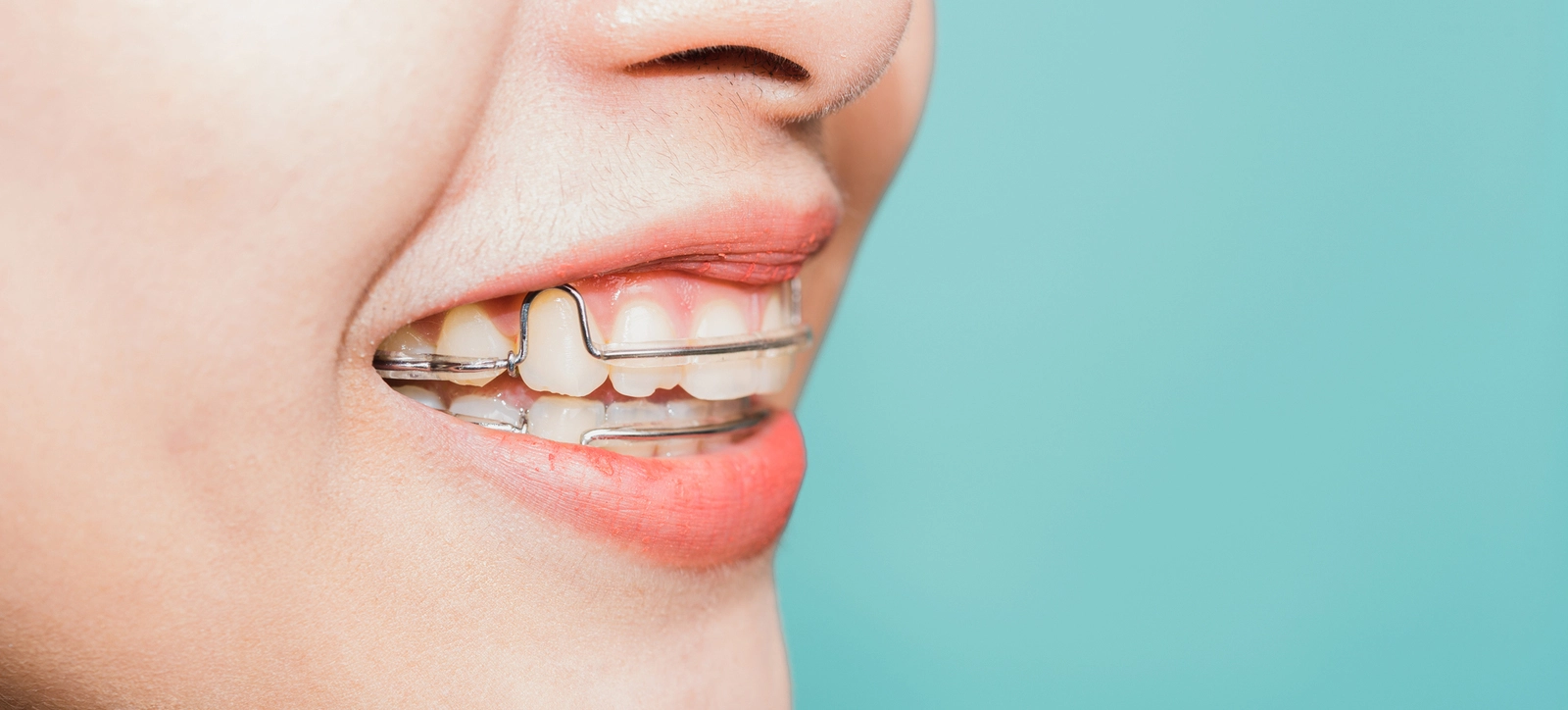Orthodontics
Table of Contents
Key Points
- The field of orthodontic care is rapidly evolving, thanks to new innovations in orthodontic appliances and advancements in orthodontic technology.
- There are many different types of orthodontic appliances aside from standard braces and retainers, including palatal expanders, Forsus, Nance, and more.
- With the advent of artificial intelligence in orthodontics, diagnosis and treatment planning have become more accurate and more efficient.
- Remote scanning has significantly changed the field of orthodontics, enabling patients to scan their teeth from home and reducing the need for excessive office visits.
- There may be more additions to the orthodontic appliance list in the future, including self-ligating braces and eco-friendly aligners.
The field of orthodontics is constantly changing, thanks to advancements in technology and the development of new and innovative orthodontic appliances. Orthodontists and researchers in the field continually ask new questions and devise innovative ideas to enhance orthodontic treatment, making it faster, more effective, and more comfortable for patients.
Types of Orthodontic Appliances
When you think of orthodontic appliances, you may think of braces and retainers. There are many other types of appliances, each designed for a specific orthodontic treatment and purpose. Along with orthodontic appliances come orthodontic accessories, which work in tandem with the appliances to improve your smile.
Palatal Expander
Sometimes called a rapid palatal expander, this type of orthodontic appliance widens the upper arch. It’s often recommended for crowded teeth or to correct crossbites. Palatal expanders are typically only effective for children, as they alter the growth pattern of the bone in the upper jaw. After age 16 for girls and 18 for boys, this appliance is typically no longer practical.
Forsus
Designed to correct overbites, the Forsus, or Forsus Fatigue Resistant Device, is a fixed appliance used for the correction of overbites. It’s made of two rods connected by a spring, and it works by moving the lower jar forward.
Herbst Appliance
The Herbst appliance may be recommended to treat Class II malocclusions, including severe overbites.[1] It’s best for children ages 9 to 14 whose jawbones have yet to stop growing. The Herbst appliance consists of two metal arms that connect bands on the upper and lower teeth. It’s usually worn before or during braces treatment. This appliance works by moving the lower jaw forward while simultaneously moving the upper molars backward.
Lower Lingual Arch
Lower lingual arches can be used in cases of slight crowding or when a child has lost their baby teeth prematurely. The lower lingual arch works by maintaining space for permanent teeth by stopping the molars from moving forward.
Headgear
Headgear refers to an appliance used to treat Class II and Class III malocclusions that result in severe misalignment.[2] Headgear consists of many different parts, including a head cap that rests on the top of the head. There are several different types of headgear, including high pull, reverse pull, and cervical pull.
Retainers
Retainers are often used after braces or other orthodontic appliances are removed. [3] Once the teeth have moved into the correct position, orthodontists generally recommend retainers to “retain” the progress that’s been made. Without a retainer, your teeth may gradually shift back towards their original positions. There are two basic types of retainers: fixed retainers and removable retainers. Retainers are often made of metal, clear plastic, or both.
Nance
The Nance appliance is typically recommended after treatment involving headgear. Made from bands affixed to the molars with wires running across the roof of the mouth, this appliance keeps the molars in place after they’ve been moved backwards.
Clear Aligners (Invisalign)
Clear aligners like Invisalign are gaining popularity due to their aesthetic appeal and versatility. These appliances can be removed to brush and floss, potentially improving overall oral hygiene and, consequently, oral health. They’re also much more discreet than traditional metal braces. Thanks to advancements in aligner technology, these appliances are more accessible than ever and can treat more severe cases than initially thought. That means you’re more likely to be a candidate for clear aligners today than ever before.
Lingual Braces
A relative newcomer to the orthodontic appliance list, lingual braces are like traditional braces, but they’re attached to the backside of the teeth instead of the front of the teeth. This makes them less visible to others. Advancements in lingual braces have made them less bulky and more comfortable for patients. These appliances may be a good alternative if you’re not a candidate for clear aligners.
What Are the Newest Advancements in Orthodontics?
Digital Orthodontics and Intraoral Scanning
Thanks to intraoral scanning, the days of creating plaster molds may be in our rear-view mirrors. Thanks to 3D-imaging technology, your orthodontist can now scan your teeth to create digital impressions that can then be used for diagnosis and treatment. Not only does it eliminate the mess of a plaster mold, but the process of intraoral scanning is much quicker and often more accurate.
3-D Printing for Retainers and Aligners
Along with 3D imaging, 3D printing technology is paving the way for custom orthodontic appliances and accessories that can be designed and printed immediately, even on the same day in some cases. This not only allows for a more comfortable and precise fit, but it can also lower costs for patients.
Remote Monitoring Technology
One of the most transformative innovations in the field of orthodontics is the advent of remote monitoring technology. Using smart dental devices and apps, patients can now scan their teeth from home and upload the images, allowing the orthodontist to evaluate their progress without an in-office visit. Thanks to the development of AI in dentistry and orthodontics, any issues can be immediately flagged and reported, helping you stay on track to achieve a beautiful smile.
Accelerated Treatment Plans
In the future, we may see accelerated treatment plans for patients, meaning they’ll be in aligners or other orthodontic appliances for less time. This is thanks to research in the use of high-frequency vibrations to accelerate tooth movement. [4]
Self-Ligating Braces
A common problem in orthodontic treatment is patients forgetting to wear their elastic bands. Self-ligating braces effectively address this issue by utilizing a specialized clip instead of rubber bands to secure the archwire in place. These types of braces are often more comfortable and work faster with fewer trips to the orthodontist’s office.
Eco-Friendly Orthodontics
The field of orthodontics is getting an eco-friendly makeover. Orthodontic tools, appliances, and even packaging are set to undergo remodels using more sustainable materials. Some orthodontists’ offices are even thinking of making the move to solar technology for powering their facilities.
Facial Aesthetics in Orthodontics
Traditionally, orthodontists have focused solely on the teeth and jaw. Now, these dental specialists are starting to consider the whole face when designing treatment plans. They consider what the appliances they use will do to the cheekbones, for instance, and other facial features. In doing so, they can not only improve the appearance of your smile but also ensure your facial features are balanced.
The Future of Orthodontic Care is Bright
With new types of appliances, diagnostic tools, and of course, AI on the horizon, the future looks bright for the field of orthodontics. Exciting advancements in orthodontic care have made treatment faster, more precise, and even more comfortable in many cases. There’s never been a better time to take advantage of orthodontic treatment. Contact Kunik Orthodontics for a free consultation today.
Frequently Asked Questions
Below are some of the most frequently asked questions regarding orthodontic appliances and technology
What types of equipment do orthodontists use?
Orthodontists use a wide range of equipment, including wires, brackets, elastic bands, and various types of tools and appliances. With the advancement of technology in the field of orthodontics, orthodontists are increasingly using computer hardware and software in their practice.
What are orthodontic accessories?
Orthodontic accessories are tools used in conjunction with an orthodontic appliance or treatment to enhance its effectiveness. Examples of orthodontic accessories commonly used include spacers, bite plates, elastics, and lingual buttons.
What do orthodontic appliances do?
Orthodontic appliances are designed to correct various dental issues related to misalignment, malocclusions, and crooked teeth. In other words, they enhance your smile!
How do orthodontic appliances work to straighten teeth?
Most orthodontic appliances work to straighten teeth by applying gentle pressure to move them into the correct position over time. They can also change the position of the jaw in some cases, such as an underbite or overbite.
How long do I need to wear orthodontic appliances?
It depends. The duration of your treatment will vary based on the type and severity of your orthodontic issues, what type of appliance you have, and how well you follow your orthodontist’s instructions, such as wearing your rubber bands or keeping your aligners in.
Do I need to see an orthodontist to get an appliance?
Yes. At-home orthodontics should be avoided, according to the American Association of Orthodontists. Without the guidance of an expert in orthodontic treatment, you could end up with an ill-fitting appliance that does more harm than good.[5]
Get The Smile Of Your Dreams With Austin's Best Orthodontics Team!
We offer orthodontic treatments plans for all ages. Schedule your free consultation now to learn about your options!The Kunik Orthodontics Editorial Guidelines
We prioritize reliability and accuracy by upholding strict editorial standards.
Our commitment to thorough vetting ensures you receive up-to-date and reliable information across every topic in our library. This commitment is driven by our mission to provide superior care and knowledge to all of our orthodontic clients.
By maintaining high standards, we strive to deliver consistent and trustworthy information, offering comprehensive orthodontic care and knowledge to our clients, their families, and anyone searching for accurate information.
Read More About Our ProcessSources
[1] professional, C. C. medical. (2025g, June 30). Tooth extraction: When you should have One & what to expect. Cleveland Clinic. https://my.clevelandclinic.org/health/treatments/22120-tooth-extraction
[2] Whelan, C. (2019b, September 13). What is orthodontic headgear and how does it help straighten teeth?. Healthline. https://www.healthline.com/health/dental-and-oral-health/headgear
[3] Leber, C. (2025, June 13). What are dental retainers?. American Association of Orthodontists. https://aaoinfo.org/whats-trending/what-are-dental-retainers/
[4] (PDF) Effect of high-frequency vibration on orthodontic tooth movement and bone density. (n.d.-p). https://www.researchgate.net/publication/335037467_Effect_of_high-frequency_vibration_on_orthodontic_tooth_movement_and_bone_density
[5] At-home orthodontics. American Association of Orthodontists. (2025b, July 12). https://aaoinfo.org/resources/at-home-orthodontics/
Amanda Stevens is a highly respected figure in the field of medical content writing. Amanda earned a Bachelor of Science degree in Social Work from Purdue University, graduating Magna Cum Laude, which serves as a strong educational foundation for her contributions.

